Know Your Yoga Asana: Demystifying Sanskrit Posture Names – Part 1
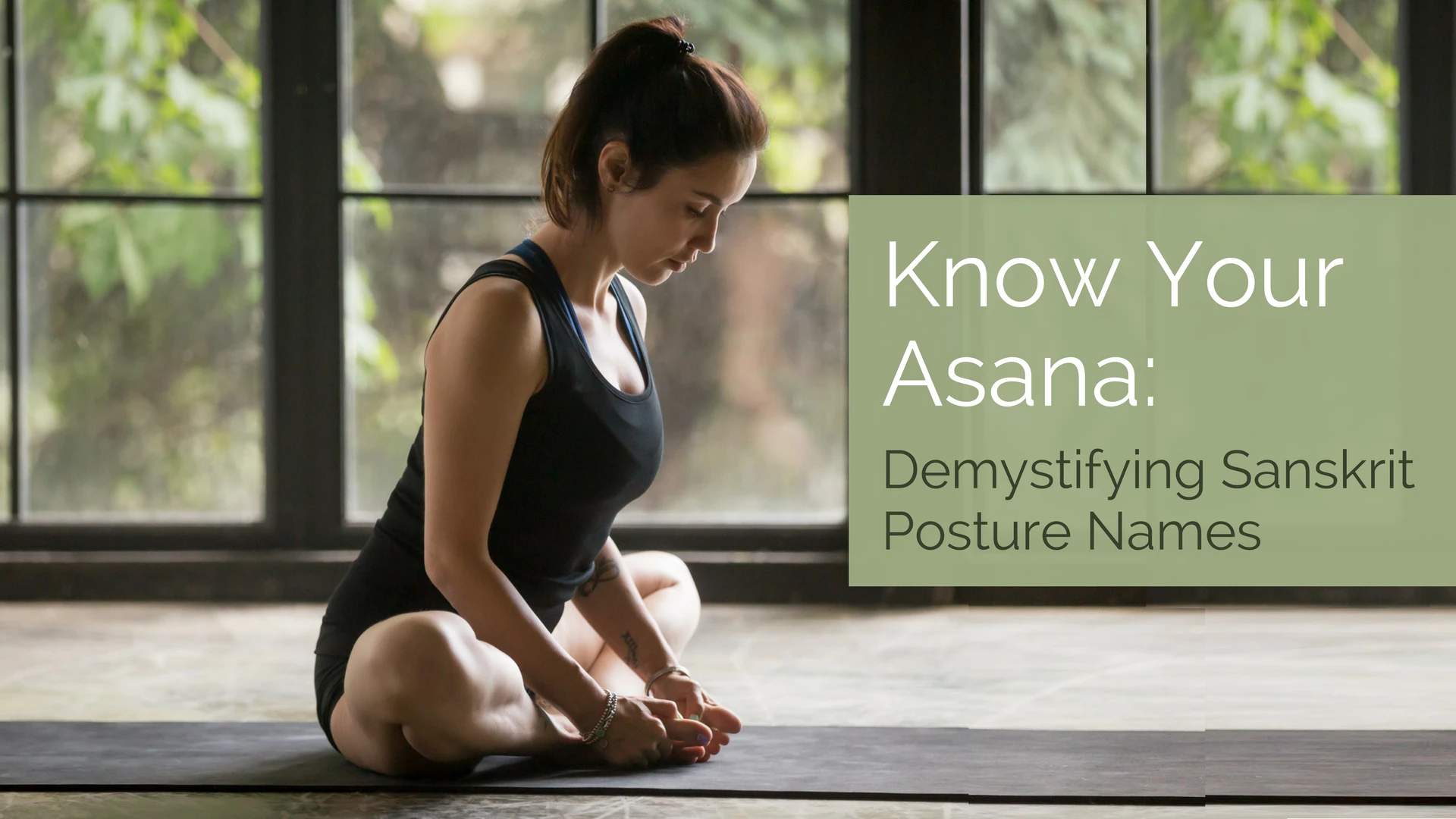
A lot of English speakers are scared of trying to learn the Sanskrit names of yoga poses. It all just sounds completely impenetrable to them, especially if a teacher is just quickly rattling off the names or maybe never uses them at all. But in my experience, once you learn a few “secrets” about the language you will find it much easier to remember pose names and even to figure out what new ones mean.
How to Decode Sanskrit Yoga Poses
First of all, English actually is related to Sanskrit! Here are some examples. (If you say the words out loud it’s easier to see the connections between the English and Sanskrit.)
Supta: “Supta” is an example of a Sanskrit word that shows up in many pose names. This is related to the English word “supine,” which, of course, means to lie on your back (as opposed to lying prone, which means lying on your belly). So any pose name that includes the word “supta” means you will be lying on your back. Examples include Supta Baddha Konasana (Reclined Cobblers Pose/Reclined Bound Angle Pose) and Supta Virasana (Reclined Hero Pose), and Supta Padangusthasana (Reclined Leg Stretch).
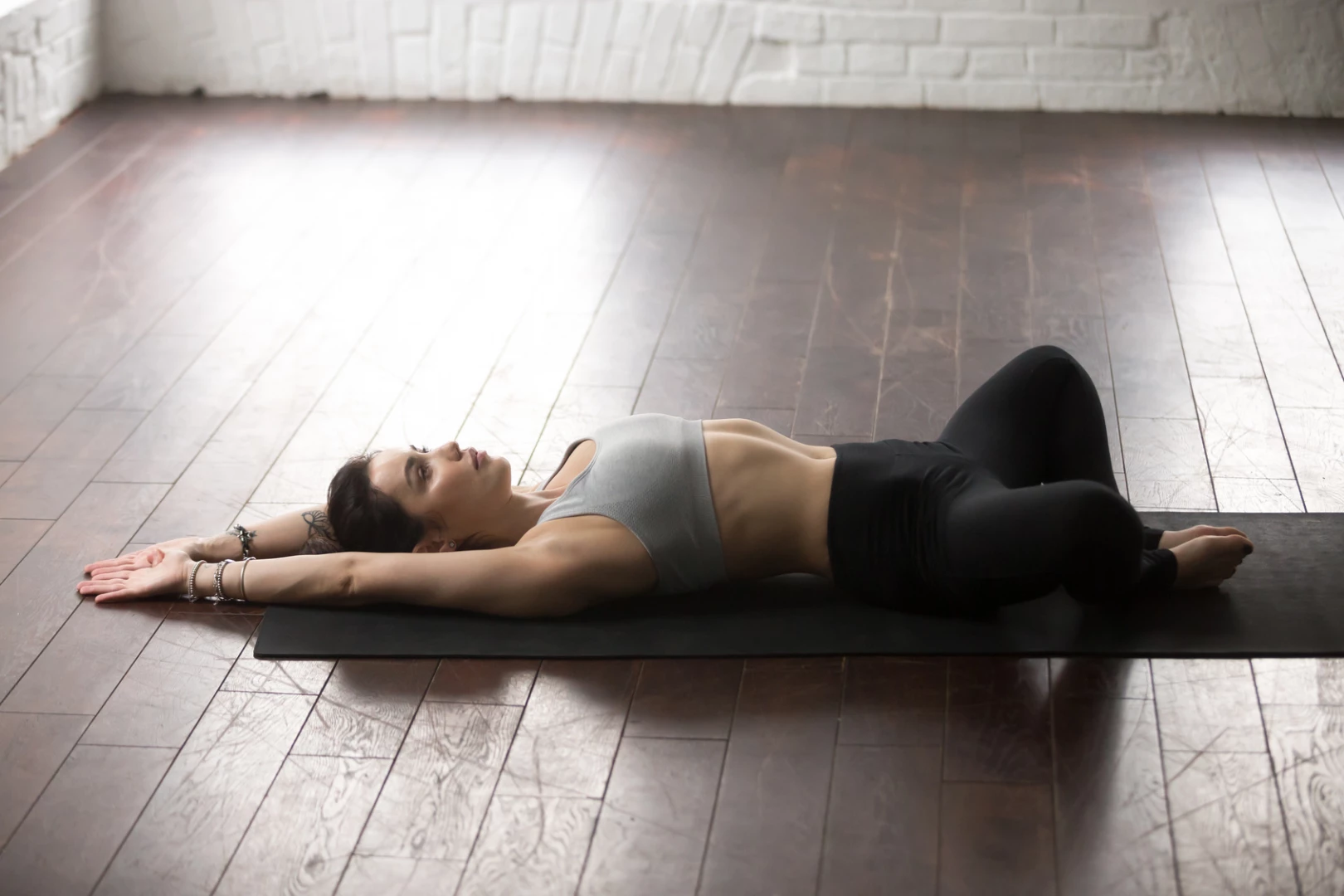
Supta/Reclined Bound Angle Pose
Kona: Another example is the Sanskrit word “kona,” which is used in pose names to mean “angle.” This is related to the English word “corner.” These two can have similar meanings. Examples include Baddha Konasana (Cobbler’s Pose/Bound Angle Pose), Utthita Parsvakonasana (Extended Side Angle Pose), Upavista Konasana (Seated Wide Angle Pose), and Trikonasana (Triangle Pose). I bet you can think of more.

Extended Side Kona/Angle Pose
Baddha: Another example is the Sanskrit word “baddha.” This is related to the English word “bind” or “join.” Examples include—wait for it—Supta Baddha Konasana (I have now just translated the whole long pose name for you and shown you how it is related to English!), Baddha Konasana and Urdva Baddha Hastasana (Upward Bound Hands Pose).
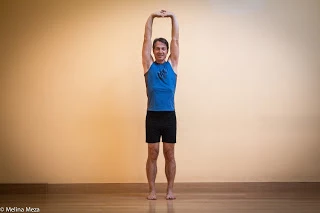
Upward Baddha/Bound Hands Pose
Tri: The Sanskrit word “tri,” which means “three,” is another good example. The first part of Trikonasana (Triangle Pose) added to “konasana” means three-angle pose. In English, when you see “tri” used as a prefix, it means “three.” The word “tri” appears in some other pose names as well.
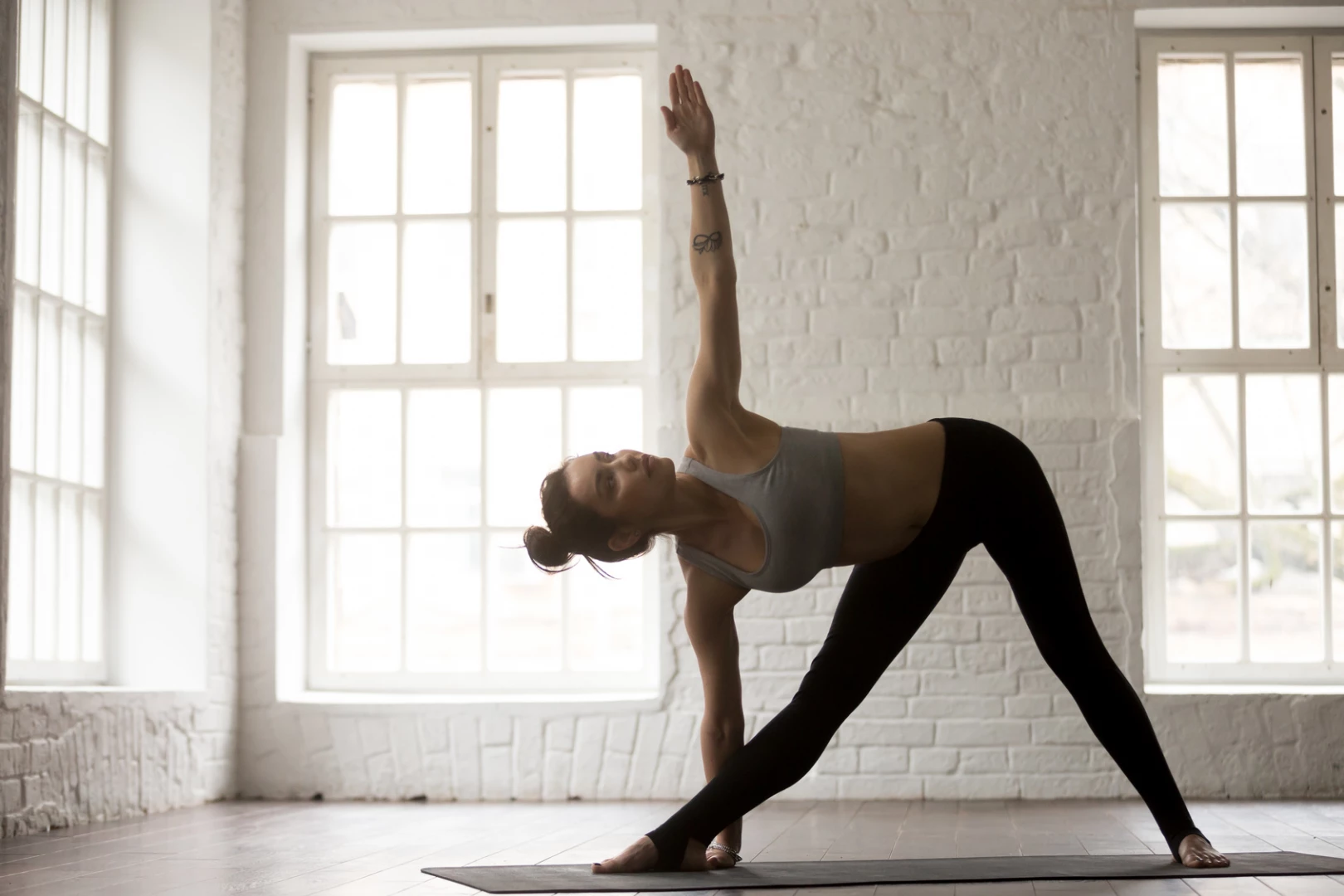
Triangle Pose
Pada: This means “foot” and is related to our English words “pedal” and “pedestrian.” An example is Pada Hastasana (Hands under Feet Pose), where you tuck your hands under your feet in a Standing Forward Bend. If a pose name, such as Eka Pada Rajakapotasana (One-Foot King Pigeon Pose) and Urdhva Prasarita Eka Padasana (Upward Expanded One-Foot Pose or Upward Splits) contains the phrase “eka pada” that means there is just one foot involved, rather than two.
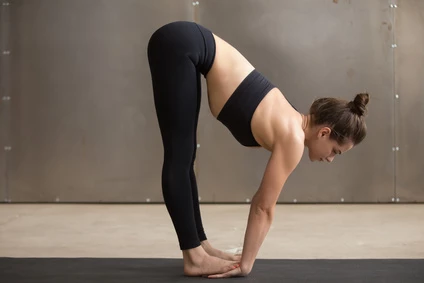
Pada/ Foot Hastasana (Hands Under Feet Pose)
Hasta: This means “hand,” and is related to, well, our word “hand.” Examples are Urdva Hastasana (Upward Hands Pose), Urdva Baddha Hastasana (Upward Bound Hands Pose), and Utthita Hasta Padasana (Extended Hands and Feet Pose).
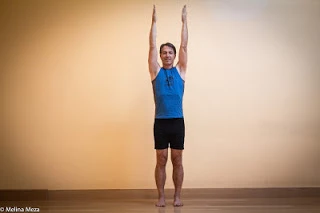
Upward Hasta/Hands Pose
Yoga: Of course, the Sanskrit word “yoga” is itself is related to the English word “yoke” and also means union. So in yoga, we are yoking the body to the mind or the self to the Divine to achieve union.
There are more examples for sure (I’m thinking “urdva” and “upward” might be related), but I think you get the point. Once you open your mind to this concept, you’ll find it easier to make sense Sanskrit.
Here’s another great article from YogaUOnline and Nina Zolotow – Vacation Anytime, Anywhere – 6 Ways to Take a Yoga Staycation.
Reprinted with permission from Yoga for Healthy Aging.
Photos courtesy of Melina Meza
 Nina Zolotow, RYT 500, Editor-in-Chief of the Yoga for Healthy Aging blog, is both a yoga writer and a yoga teacher. She trained to be a yoga teacher at The Yoga Room in Berkeley, California, has studied yoga therapy with Shari Ser and Bonnie Maeda, and is especially influenced by the teachings of Donald Moyer. She also studied extensively with Rodney Yee, and is inspired by the teachings of Patricia Walden on yoga for emotional healing. Her special area of expertise is yoga for emotional well-being (including yoga for stress, insomnia, depression, and anxiety) and she teaches workshops and series classes on yoga for emotional well-being, stress management, better sleep, home practice, and cultivating equanimity. Nina is the co-author with Baxter Bell of Yoga for Healthy Aging: A Guide to Lifelong Well-Being and co-author with Rodney Yee of Yoga: The Poetry of the Body (with its companion 50 Card Practice Deck) and Moving Toward Balance. She is also the author of numerous articles on yoga and alternative medicine.
Nina Zolotow, RYT 500, Editor-in-Chief of the Yoga for Healthy Aging blog, is both a yoga writer and a yoga teacher. She trained to be a yoga teacher at The Yoga Room in Berkeley, California, has studied yoga therapy with Shari Ser and Bonnie Maeda, and is especially influenced by the teachings of Donald Moyer. She also studied extensively with Rodney Yee, and is inspired by the teachings of Patricia Walden on yoga for emotional healing. Her special area of expertise is yoga for emotional well-being (including yoga for stress, insomnia, depression, and anxiety) and she teaches workshops and series classes on yoga for emotional well-being, stress management, better sleep, home practice, and cultivating equanimity. Nina is the co-author with Baxter Bell of Yoga for Healthy Aging: A Guide to Lifelong Well-Being and co-author with Rodney Yee of Yoga: The Poetry of the Body (with its companion 50 Card Practice Deck) and Moving Toward Balance. She is also the author of numerous articles on yoga and alternative medicine.



